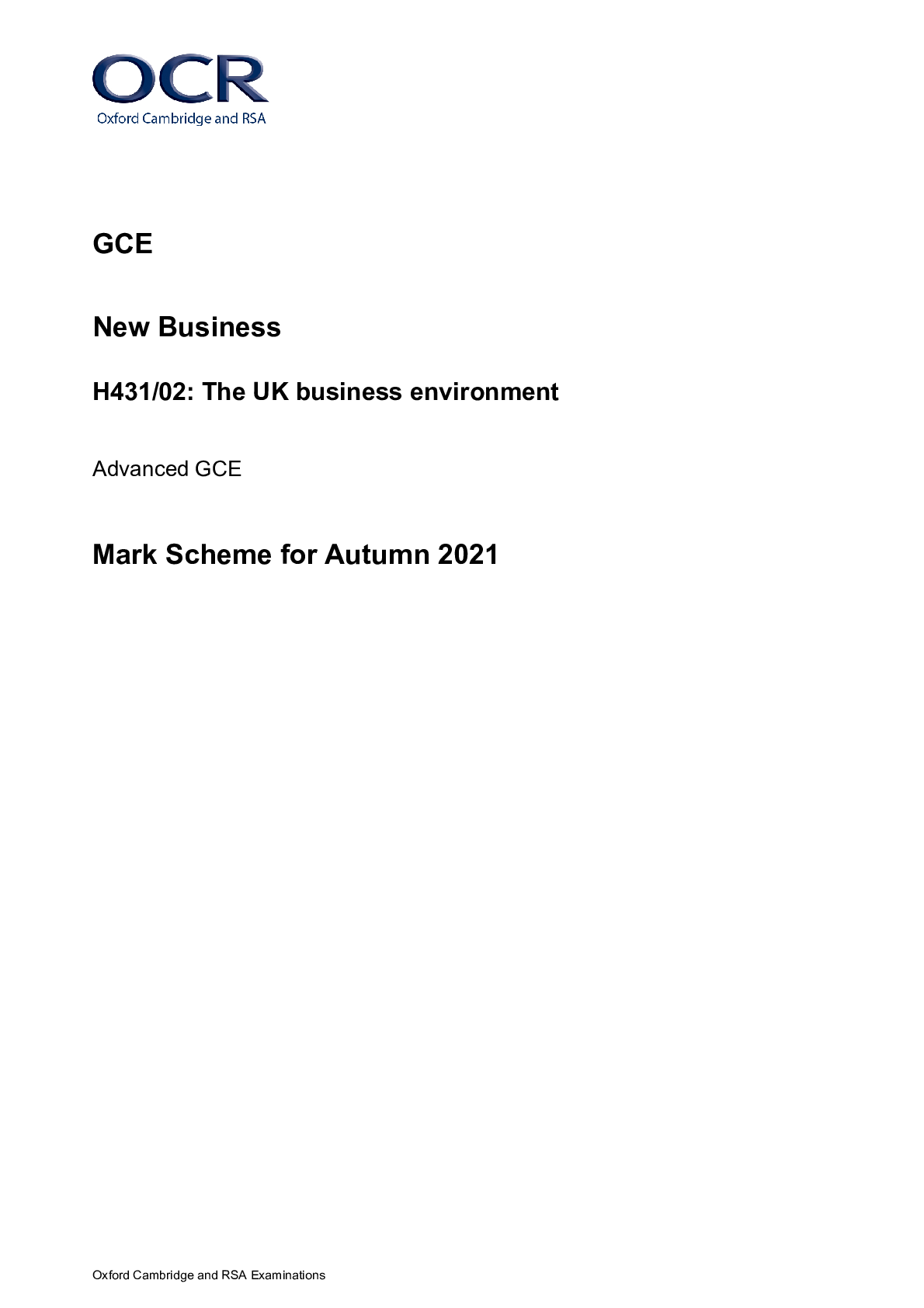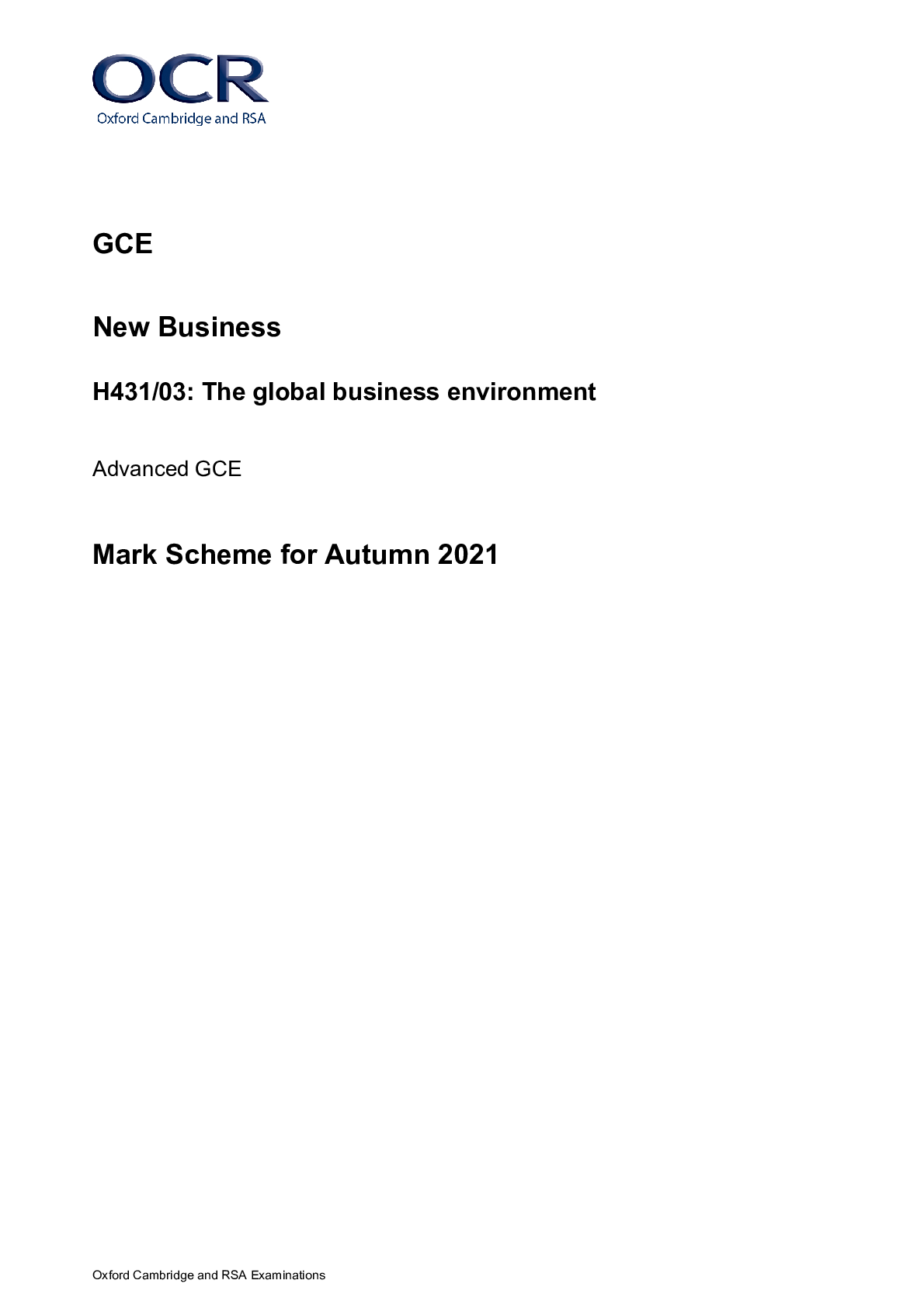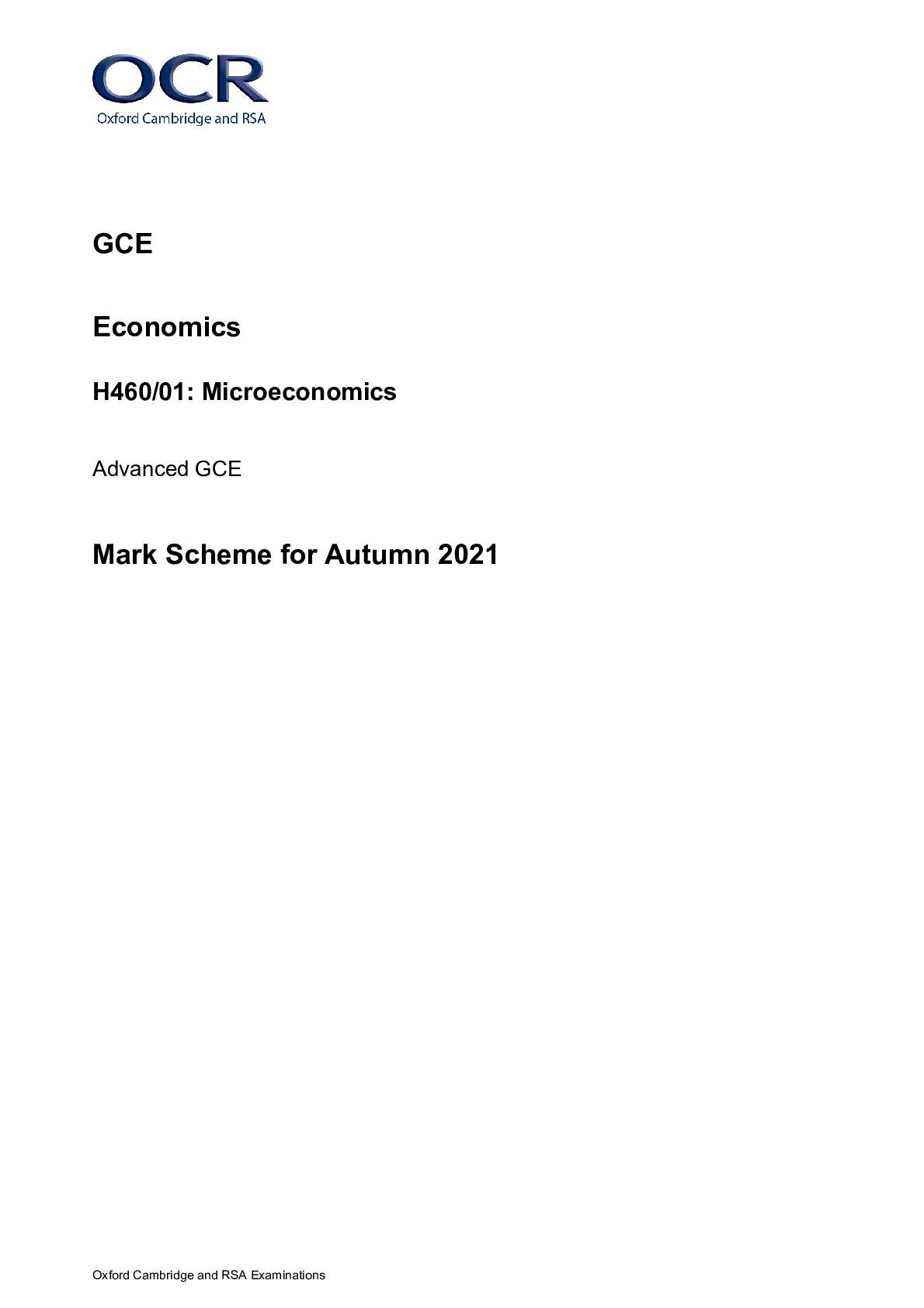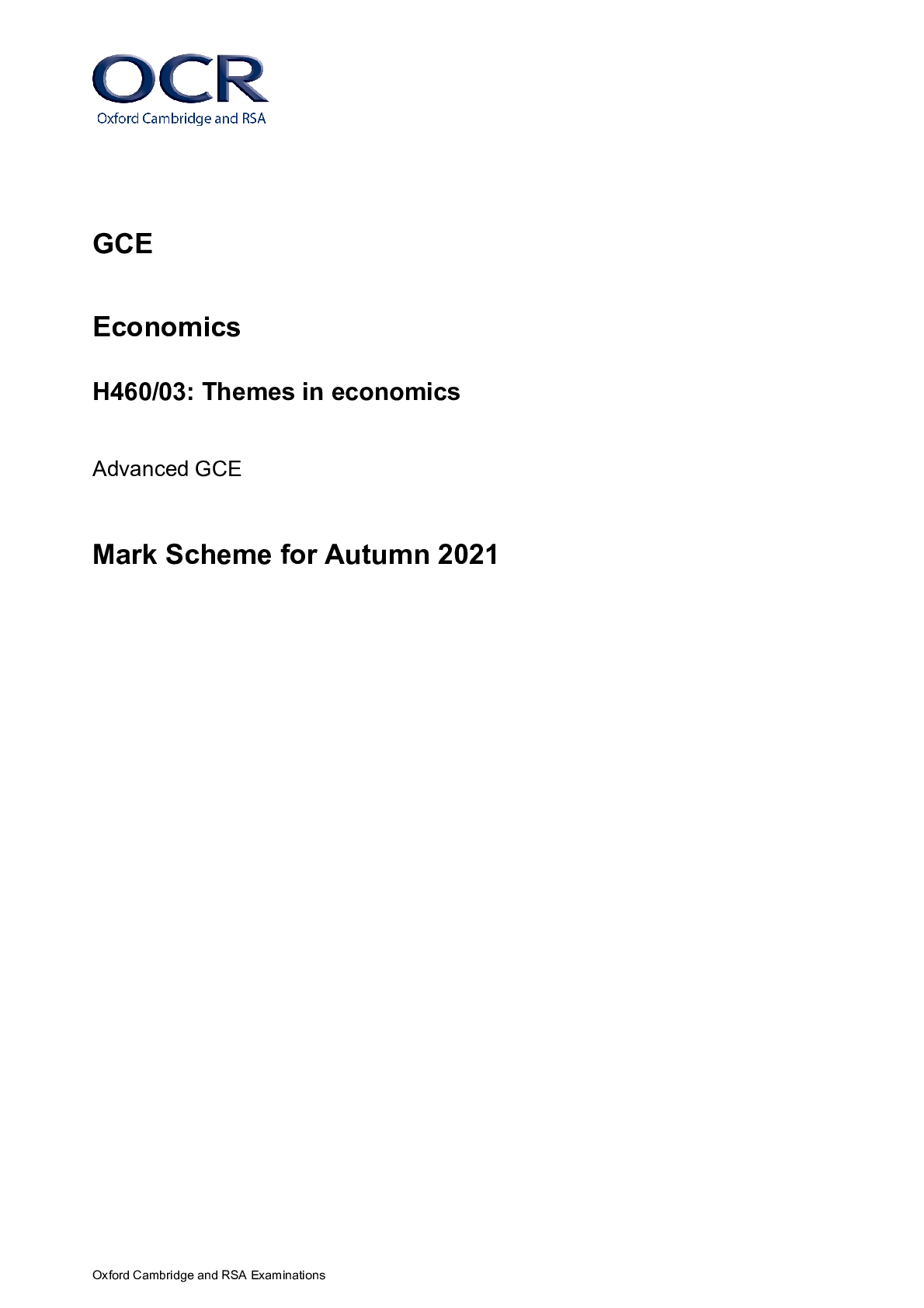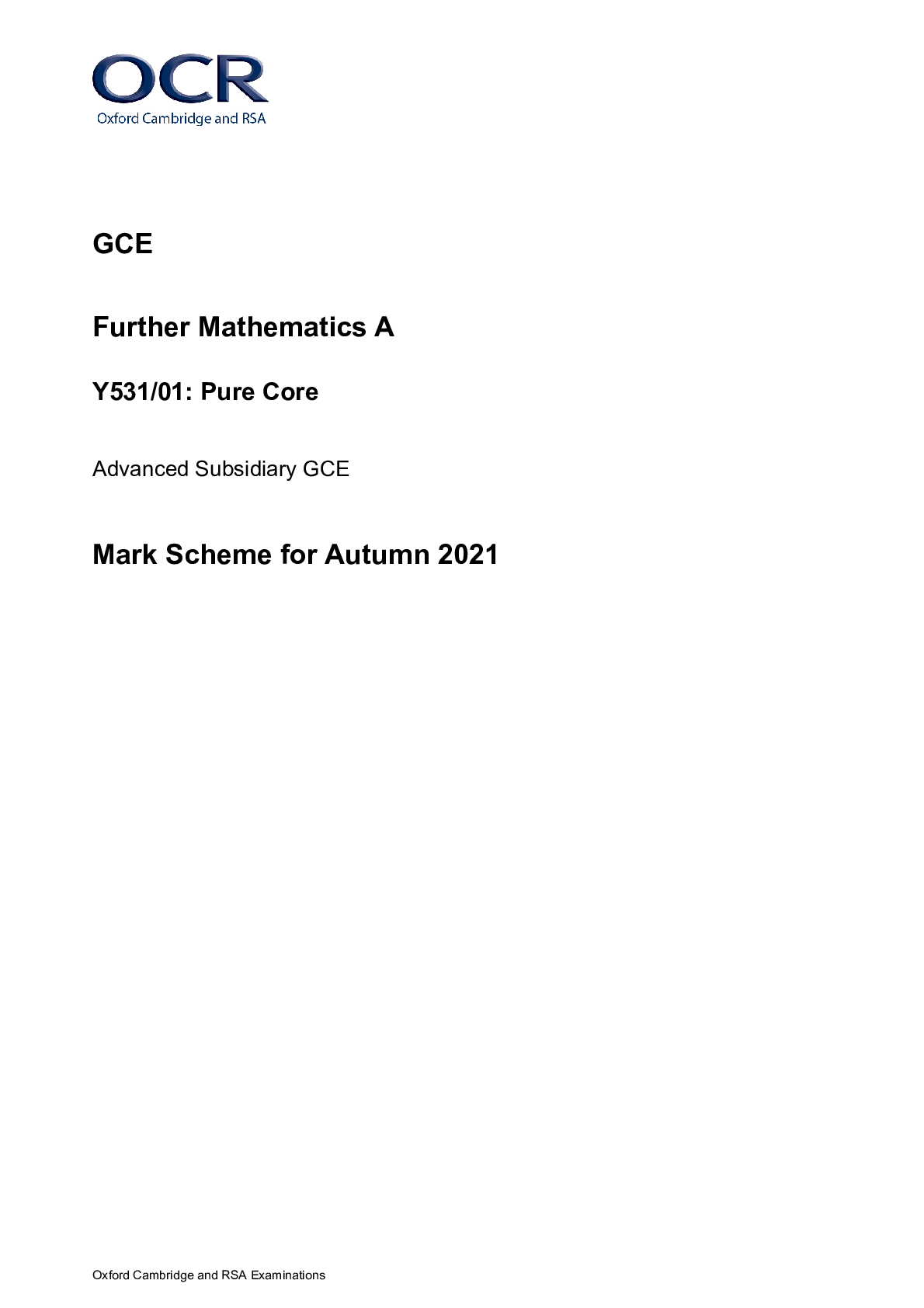Physical Education > MARK SCHEME > GCE Physical Education H555/03: Socio-cultural issues in physical activity and sport Advanced GCE Ma (All)
GCE Physical Education H555/03: Socio-cultural issues in physical activity and sport Advanced GCE Mark Scheme for Autumn 2021
Document Content and Description Below
GCE Physical Education H555/03: Socio-cultural issues in physical activity and sport Advanced GCE Mark Scheme for Autumn 2021 Oxford Cambridge and RSA Examinations GCE Physical Education H55... 5/03: Socio-cultural issues in physical activity and sport Advanced GCE Mark Scheme for Autumn 2021Oxford Cambridge and RSA Examinations OCR (Oxford Cambridge and RSA) is a leading UK awarding body, providing a wide range of qualifications to meet the needs of candidates of all ages and abilities. OCR qualifications include AS/A Levels, Diplomas, GCSEs, Cambridge Nationals, Cambridge Technicals, Functional Skills, Key Skills, Entry Level qualifications, NVQs and vocational qualifications in areas such as IT, business, languages, teaching/training, administration and secretarial skills. It is also responsible for developing new specifications to meet national requirements and the needs of students and teachers. OCR is a not-for-profit organisation; any surplus made is invested back into the establishment to help towards the development of qualifications and support, which keep pace with the changing needs of today’s society. This mark scheme is published as an aid to teachers and students, to indicate the requirements of the examination. It shows the basis on which marks were awarded by examiners. It does not indicate the details of the discussions which took place at an examiners’ meeting before marking commenced. All examiners are instructed that alternative correct answers and unexpected approaches in candidates’ scripts must be given marks that fairly reflect the relevant knowledge and skills demonstrated. Mark schemes should be read in conjunction with the published question papers and the report on the examination. © OCR 2021H555/03 Mark Scheme October 2021 2 1. Annotations used in the detailed Mark Scheme Annotation Description Annotation Description Tick Knowledge and understanding / indicates AO1 on Q8 Cross Example/Reference / indicates AO2 on Q8 Benefit of doubt Development / indicates AO3 on Q8 Too vague Level 1 response on Q8 Repeat Level 2 response on Q8 Indicates sub-max reached where relevant Level 3 response on Q8 Noted but no credit given Blank page Significant amount of material which doesn’t answer the question Sub-maxes are indicated with S; the guidance section of the mark scheme shows which questions these are relevant to. KU/EG/DEV used instead of ticks on the extended response question to indicate where knowledge or development points from the indicative content have been made. On this extended response question, one KU/EG/DEV does not necessarily equate to one mark being awarded; the marking is based on a levels of response mark scheme which awards a level and mark holistically based upon the quality of the response overall against the levels descriptors.H555/03 Mark Scheme October 2021 3 Section A Question Answer Marks Guidance 1 2 marks from: 1. Class distinct Very little mixing with lower class 2. Wagering Most UC sport was a focus of betting. 3. Time consuming UC played sports which took a long time 4. Rule bound UC sports had written and/or complex rules 5. Civilised UC sports were not violent 6. Equipped UC sports required equipment 7. Regular UC played sports regularly 2 AO1 Mark first two only. DNA ‘sophisticated’ alone 2 Developments in L and O 1. Society became more civilized. 2. Police force was created/Metropolitan police act passed 3. RSPCA formed 4. Cruelty to animals act passed through Parliament Changes in Characteristics. A. Sports became less violent B. Mob games replaced by rationalised sports C. Sports rules became concerned with safety D. Most animal cruelty sports became illegal 2 AO2 Mark first two only. To be awarded marks candidates must match a development in L and O with an appropriate change in characteristic. Answers must give cause and effect. 3 1. Nazi propaganda 1936 Berlin 2. Civil rights demonstration 1968 Mexico (City) 2 AO1 Correct year and venue required for 1 mark.H555/03 Mark Scheme October 2021 4 4 1. Phase 2-3 Further assessment of suitability. 2. Phase 2-3 Preparation for training and development 3. Phase 2-3 Physical /medical screening / testing 4. Phase 2-3 Psychological assessment 5. Phase 4 (6-12 month) trial in the specific sport’s elite training environment 2 AO1 Sub max 1 pts 1-4. 5 1. Purchased from the NGB etc. Media companies pay the sport / club /governing body for the rights to televise. 2. Sold to the consumer Pay per view / subscription channels sell sport to the viewer. 3. Sold to other media companies. Sport can be sold to other companies so they can show it on their networks. 4. Sold to commercial companies Breaks in play are sold for advertising 2 AO2H555/03 Mark Scheme October 2021 5 Section B Question Answer Marks Guidance 6 (a)i 1. Character development The development of character through sport 2. Endeavour and integrity / effort and fair play. A combination of physical endeavour and moral integrity / combination of trying hard and being honorable, truthful and sportsmanlike 1 AO1 (a)ii 1. Public schools inspired revival of Olympic Games De Coubertin visited public schools and was inspired by the English Public school approach to sport. 2. Morals Both schools and Olympics aimed for moral development 3. Education Both aimed to educate young people through sport 4. Physical endeavour Both encouraged hard work / physical effort. 5. Fair play Both encouraged fair play / sportsmanship. 6. Respect Both encouraged respect 7. Excellence Both valued excellence and the efforts necessary to achieve it. 4 AO1H555/03 Mark Scheme October 2021 6 Section B Question Answer Marks Guidance (b) In 1860: 1. Facilities Very few public swimming pools / suitable environments to learn or take the test. 2. NGBs No NGB to organize the sport so no award schemes existed 3. Education / literacy Few 13 years olds attended school so were not literate enough to pass the test or learn the theory 4. Time / energy 13 year olds worked in factories so had no time or energy to develop skills needed. 5. Money Low wages so no spare money to pay for entrance fees or clothing. 6. Middle class influence Factory owners did not encourage workers to participate in sport and recreation. 7. Transport No public transport (trams/buses) to travel on to access facilities 8. Improved public health / disease control/ housing. Public health was poor so not strong enough or well enough to participate. 5 AO3 Candidates must link factors with effect on participation to gain credit.H555/03 Mark Scheme October 2021 7 (c)i (c)ii 1. Worldwide media coverage Fact 2 (TV rights...) 2. Free movement of players Fact 4 (50% of the England squad) 3. Global brand sponsorship Fact 8 (Nike was the kit sponsor) 4. Free movement of supporters. Fact 6 (4000 tickets sold abroad) 5. Free movement of supporters Fact 7 (Fans from over 30 countries) 6. Free movement of supporters Fact 9 (Travel comps from Aus etc) 1.Income Increased income for city from participants/spectators 2. Employment / volunteering Increased jobs / opportunities for residents 3. Tourism Increased tourism for city 4. Shop window effect Liverpool was shown positively worldwide. 5. Commercial benefits Profit from goods sold to spectators 3 AO1 3 AO2H555/03 Mark Scheme October 2021 8 (d) Difference Cause 1. Sponsorship 1995 little sponsorship because netball had low profile and hardly any media coverage. 2. Kit sponsor 1995 no kit sponsor because event had no media coverage, 3. Media coverage 1995 Limited media coverage because there was very little interest in female sport. No internet. 4. Tickets sold / spectator numbers 1995 fewer tickets sold / fewer spectators. Lack of media exposure for netball meant smaller fan base. Lack of advertising of tournament 5. Fans from other countries. 1995 very few fans travelled to tournament from other countries. Netball not globalised / little interest so travel companies did not provide packages. 6. Professionalism 1995 no professional players because there was no sponsorship / media coverage to provide clubs with money to pay players. 7. Free movement of players 1995 all players played their netball in their home countries; netball was not a global sport. 8. Standard of play 1995 Standard was lower because there was no investment from media and sponsors. No professionalism / greater number of participants. 9. Profit 1995 tournament made no profit; fewer spectators meant fewer marketing opportunities. 10. Funding 1995 tournament would have had less funding due to fewer sponsors/ less media coverage. 4 AO3 Accept answer from 2019 perspective. How and why (AO3) so candidates must link differences to their causes.H555/03 Mark Scheme October 2021 9 7 (a) 1. Illegal Gambling Match fixing, spot fixing, using unlicensed bookmakers. 2. Laws/rules Laws / rules to prevent players/ managers betting on own sports 3. Punishments Very harsh punishments (long bans/ high fines) for those caught. 4.Illegal drug use Using illegal performance enhancing drugs. 5. WADA Created by IOC to take responsibility for matters relating to drug testing. 6. Testing Random testing / in or out of competition testing. 7. Education (NGB programmes to) educate athletes. 8. Punishments Stricter punishments – bans, medals stripped, fines. 9. Culture Reinforcement of drug free culture / ‘clean sport.’ 10. Player violence Violence on the pitch 11. Punishment Sanctions for violent players/ citing after the game 12. Education. Player education / teach importance of role modelling / responsibility 13. Emotional control Teach anger management. 14. Fair play Fair play rewards in tournaments etc. 15. Coaching Coach assertion rather than aggression. 16. Spectator violence Hooliganism. 17. Banning orders Offending fans can be banned from games by law. 18. CCTV Deters violence as perpetrators can be identified. 19. Increased security More staff / stewards / police at venue. 20. Clubs punished Clubs fined / banned for spectator behaviour / games played behind closed doors 21. Alcohol control Alcohol sales at or near ground prohibited, alcohols bans. 6 AO2 DNA ‘gambling’ on its own. DNA just ‘drugs’ or ‘drug use’ candidates must reference illegality. DNA ‘violence’ on its own Strategies must match examples given. Sub max of 1 for each example (in grey). Three strategies must be different so candidates can only be awarded 1 mark from 3,8, 11 (punishment) and 1 from 7,12 (education) If example incorrect no credit can be given for strategy.H555/03 Mark Scheme October 2021 10 7 (b) Negative Effects on Participation 1. Time Use of devices reduces the time available for participation. 2. Entertainment Devices provide entertainment so sport/physical activity not needed. 3. Reduced physical effort Devices are labour saving so can be used to minimize activity. 4. Substitute Devices maybe used as a substitute for physical activity. 5. Reduced finance Expense of devices may reduce money available to spend on participation. Positive Effects on Participation 6. Motivation Devices might be used as exercise / fitness monitor / online access to fitness programmes / classes 7. Knowledge / performance Devices may increase knowledge, improve performance. 8. Inspiration Participating in virtual sport may inspire live participation. 9. Opportunities / Communication Devices may provide / communicate information about opportunities for physical activity. 4 AO3 Links must be made between device usage and an aspect of participation. Examples are not required. Sub max 3 pts 1-5 and 6-10H555/03 Mark Scheme October 2021 11 (c)i 1. Increased income Cricket will receive money from TV rights. 2. Increased sponsorship More sponsors will be attracted by greater media coverage 3. Raised standards The money from media and sponsorship will improve facilities, coaching, equipment, standard of play. 4. Raised profile Increased media interest will increase interest/popularity/spectator numbers 5. Participation Increased participation 6. Professionalism Allows players to be professional. 7. Player income Elite players earn more money. 8. Free to air (FTA) advantage Everyone has equal access. Cricket is seen by everyone irrespective of social background. 9. Dispels stereotype Coverage on FTA TV suggest cricket is for everyone / not elitist. 3 AO1 [c] ii 1. Rugby union Rugby 7s 2. Hockey Blue pitches, no off side, self pass, 15min quarters in top level competitions 3. Tennis Tie break 4. Badminton Easier scoring system, coloured player clothing. 5. Squash Glass backed courts 6. Netball Sidelines, centre passes both taken faster. No draws in Superleague. Fast5 7. Judo Rule changes to make contests shorter and more exciting 8. Volleyball Beach volleyball. 9. Basketball 3x3 basketball. 3 AO2H555/03 Mark Scheme October 2021 12 (d) 1. Entertainment Sponsor provides new exciting format to watch 2. Accessibility People who might not easily have accessed cricket before may watch 3. Advertising Play / environment may be affected by advertising of sponsor’s product 4.Obesity May encourage consumption of junk food / further contribute to obesity problem. 5. Ethics Spectators may not agree with choice of sponsor. 6. Cost Entry costs high, sponsor does not contribute to cost of entry / sponsor may subsidise tickets for target groups eg: young people. 7. Spectator facilities Provision of improved facilities and entertainment for spectator 4 AO3 Marks are AO3 so candidate must make clear links between sponsorship and its effect on spectators.H555/03 Mark Scheme October 2021 13 Section C Question Answer Guidance 8* Level 3 (8–10 marks) • detailed knowledge and excellent understanding (AO1) • detailed analysis and critical evaluation (AO3) • very accurate use of technical and specialist vocabulary • there is a well-developed line of reasoning which is clear and logically structured. The information presented is relevant and substantiated. Level 3 responses are likely to include: • A detailed history of social class and participation from pre industrial times – 20th century • History is well supported by examples of sports and roles undertaken by different social classes. • Detailed discussion about the effects of commercialisation on social equality. Will reference both the media and sponsorship. • A balance between positive and negative effects and a conclusion as to whether commercialisation has improved social equality Level 2 (5–7 marks) • good knowledge and clear understanding (AO1) • good analysis and critical evaluation (AO3) • generally accurate use of technical and specialist vocabulary • there is a line of reasoning presented with some structure. The information presented is in the mostpart relevant and supported by some evidence. Level 2 responses are likely to include: • A good knowledge of social class and participation from pre industrial times – 20th century • Examples of sports and roles affected by social class are given to support most of the points made. • Appropriate discussion about the effects of commercialisation on social equality. May reference both the media and sponsorship. • Both positive and negative effects will be included but there may not be a balance.H555/03 Mark Scheme October 2021 14 Level 1 (1–4 marks) • satisfactory knowledge and understanding (AO1) • limited evidence of analysis and critical evaluation (AO3) • technical and specialist vocabulary used with limited success • the information is basic and communicated in an unstructured way. The information is supported by limited evidence and the relationship to the evidence may not be clear. Level 1 responses are likely to include: • A satisfactory knowledge of social class and participation from pre industrial times – 20th century. • A few examples of sports and roles affected by social class are given to support the points made. • Some discussion of how commercialisation affects social equality. May reference only one aspect or may fail to define different elements of commercialisation. • A lack of balance between positive and negative effects. May concentrate on either positive or negative. (0 marks) No response or no response worthy of credit. 8.H555/03 Mark Scheme October 2021 15 Marks: 10 (AO1 x3, AO2 x4, AO3 x3) Guidance: Maximum of 3 marks to be awarded for AO1. Maximum of 4 marks to be awarded for AO2 Maximum of 3 marks to be awarded for AO3 Indicative Content: History of social class and participation from pre industrial times – 20th century AO1- KU AO2 – E.G. AO3 - DEV Pre industrial times 1. Upper and lower classes did different activities. e.g. Upper class – fox hunting, real tennis etc e.g. Lower class – mob games, cruel animal sports etc. Activities were different because of social factors such as availability of time / education / transport / money UC sports were long lasting. Competitions were generally for either upper or lower classes they did not compete against each other 2. Upper class participated more than lower class e.g. Shrove Tuesday Upper class participated regularly. Lower class participated occasionally / only on special days 3. Only played together in cricket Lower class were professional and upper class amateurs Lower class bowled and fielded, upper class batted 4. Upper class acted as patrons for lower class participants e.g. Pugilism e.g. Pedestrianism Upper class wagered on performance of lower class Upper class and lower class had different roles in the same sport. 5. Lower class often participated in sports related to their jobs e.g. Ferrymen rowed e.g. Footmen raced on foot.H555/03 Mark Scheme October 2021 16 AO1- KU AO2 – E.G. AO3 - DEV Post 1850 Industrial Britain 6. Lower class participated less than in pre industrial times Due to longer working hours in factories Factory bosses would not give traditional days off 7. Lower class participation hampered by health, working and living conditions 8. Strong class divide remained No inter class competition 9. Sports played were still reflective of class. 10. New middle class emerged Not born into aristocracy or owners of large estates Did go to public school so were keen on physical activity. 11. Upper class now able to travel so took sports further afield e.g. Shooting / fishing in Scotland 12. Middle classes encouraged lower class to participate e.g. Factory/works/church teams e.g. Swimming baths, public parks Created facilities for the working class Organised activities for the working class 13. Middle classes realised the benefit of physical activity to their workers e.g. Works outings to the seaside 14. Introduction of half day Saturday increased lower class involvement e.g. As players e.g. As spectators Factory Act 1850 15. Broken time payments Created to allow working class players to be compensated for lost wages when playing on Saturdays. Beginning of professional football and rugby league.H555/03 Mark Scheme October 2021 17 AO1- KU AO2 – E.G. AO3 - DEV 20th Century Britain 16. Social class was less well defined Sub divisions of classes in classification system. 6 social classes identified. 17. Rise in spectatorism amongst skilled manual workers Unskilled still could not afford to spectate. 18. Lower class men participated in activities based around the pub e.g. skittles, darts 19. All classes now competed alongside each other. Cricket now has a mixture of classes playing on equal terms in the same team 20. Some sports still linked to certain social class e.g. football lower, rugby union upper, hockey upper, netball lower, golf upper etc. 21. People encouraged to participate in sports seen as suitable for their class. e.g. working class boys encouraged to play football, middle class boys rugby, mc boys cricket, wc boys athletics. Perpetuated the stereotyping of some sports.H555/03 Mark Scheme October 2021 18 Indicative Content: Discuss whether commercialisation has increased social equality in 21st century sport. YES AO1 - KU AO2 – E.G. AO3 - DEV 22. Commercialisation has provided money for sports e.g. NGBs are paid for media rights e.g. Teams, competitions are sponsored e.g. Chance to shine, Streetgames, Sport England Fitness Campaigns Money comes from sponsorship and media. Sports have invested this money into grass roots schemes to give opportunities to all classes. NGBs have targeted children from lower classes in specialist schemes. Popular sports now have the money to identify and nurture the best athletes irrespective of class. Talented athletes from lower classes might gain sponsorship / EPAs which enables high level training 23. Increased media coverage has exposed people from all classes to all sports. e.g. Equestrian sport on free to air TV e.g. Skiing on free to air Providing aspiration irrespective of class. 24. Lower class young people have more role models that they can identify with e.g. Williams sisters, Marcus Rashford Provided by media coverage RMs lift aspirations of young people RMs inspire young people to participateH555/03 Mark Scheme October 2021 19 NO AO1 - KU AO2 – E.G. AO3 - DEV 25. Sport still presented in stereotypical way by the media e.g. skiing, equestrian, football, boxing, wrestling Media are not breaking down class barriers as effectively as they might. 26. Media coverage is not fair e.g. high exposure football, rugby, tennis, golf e.g. low exposure badminton, squash, hockey Most popular sports are richest so lower social classes may not get opportunities in minority sports. 27. Sponsors only interested in highest level of exposure not always fair or ethical or mindful of equal opportunities when selecting who to sponsor. e.g. less sponsorship for women and minority sports. 28. Higher proportion of Olympic medalists still comes from higher SE groups. e.g. London Olympics 1/3 of medalists from fee paying schools.OCR (Oxford Cambridge and RSA Examinations) The Triangle Building Shaftesbury Road Cambridge CB2 8EA [Show More]
Last updated: 1 year ago
Preview 1 out of 21 pages
Instant download
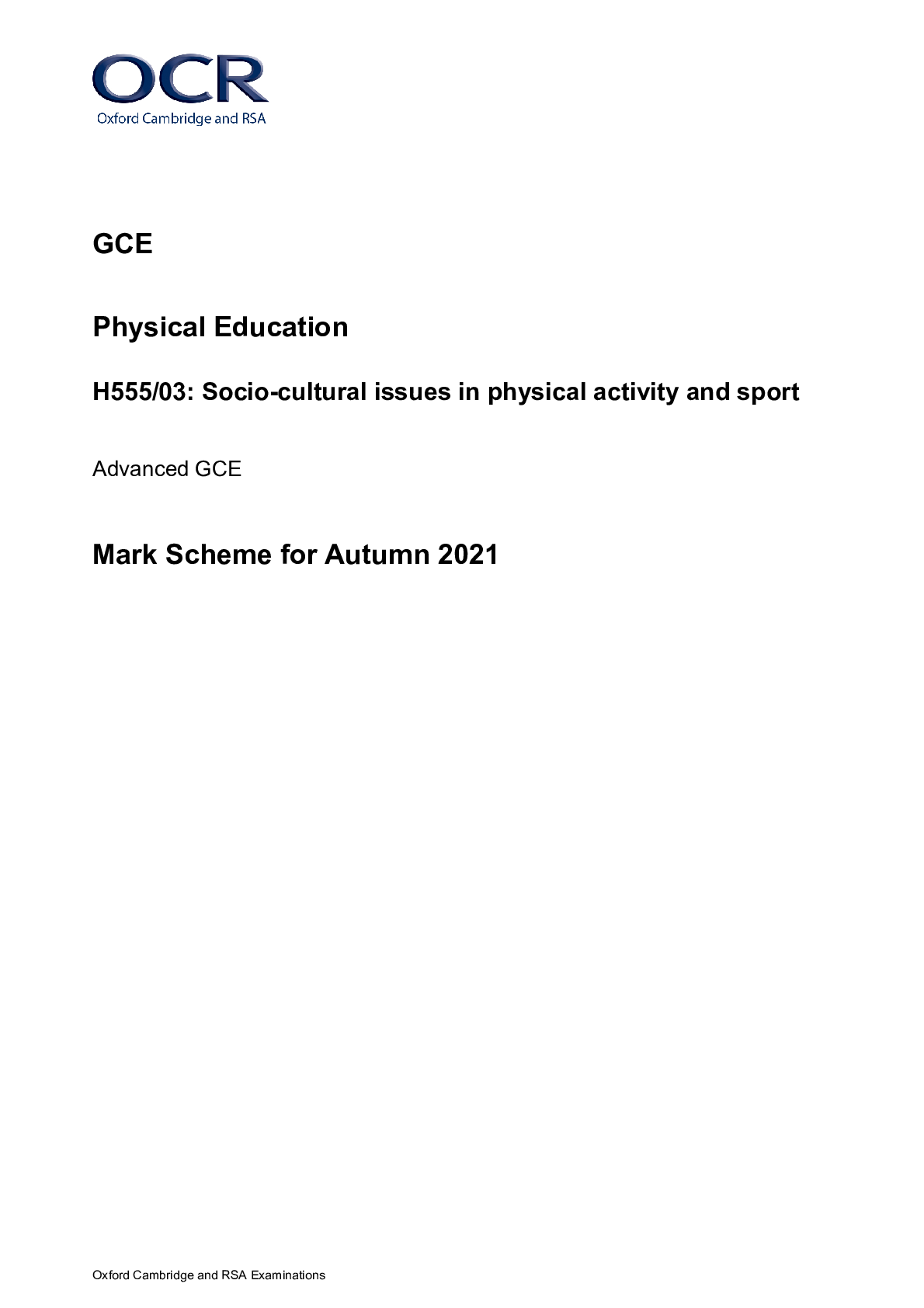
Buy this document to get the full access instantly
Instant Download Access after purchase
Add to cartInstant download
Reviews( 0 )
Document information
Connected school, study & course
About the document
Uploaded On
Oct 07, 2022
Number of pages
21
Written in
Additional information
This document has been written for:
Uploaded
Oct 07, 2022
Downloads
0
Views
51


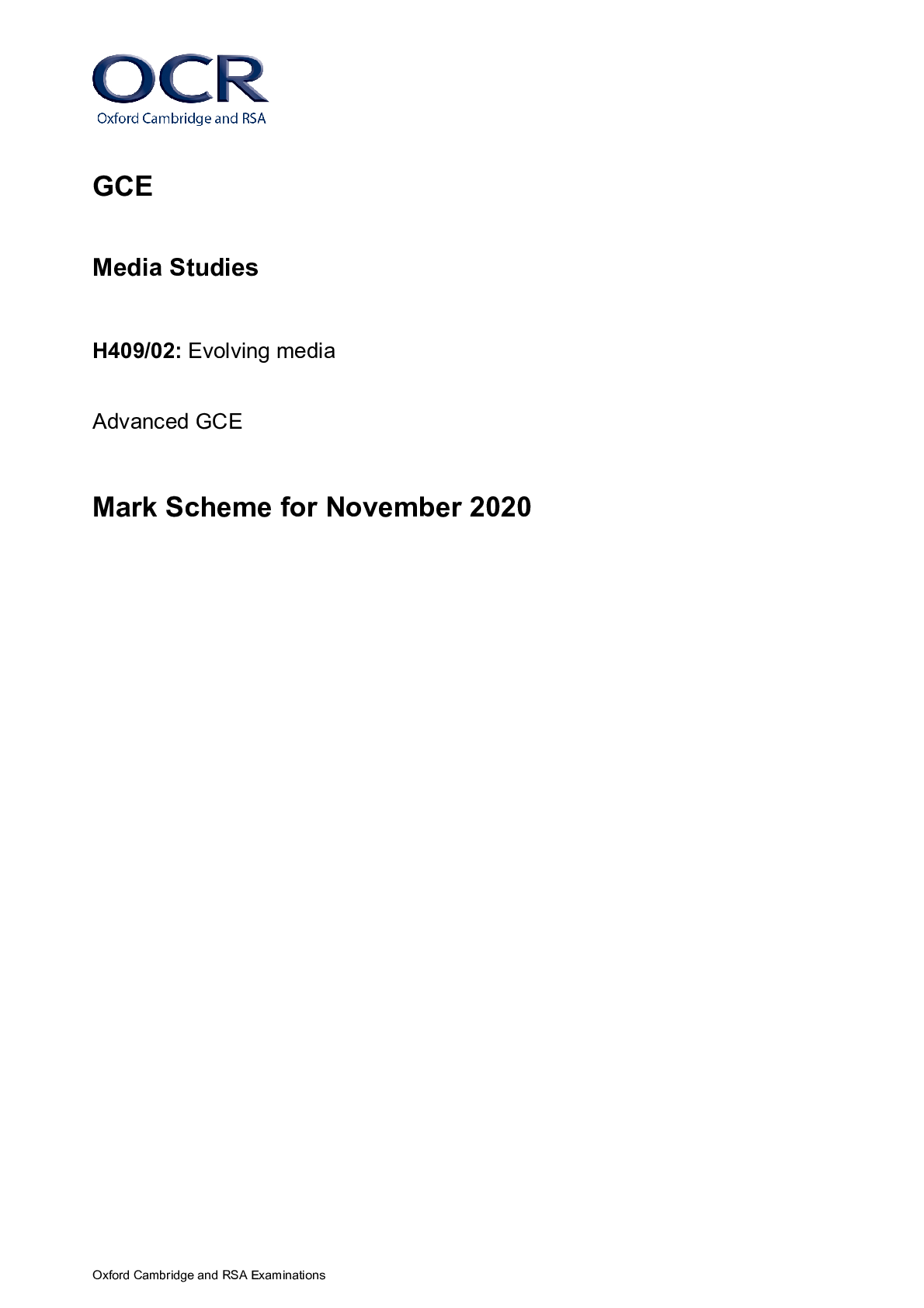
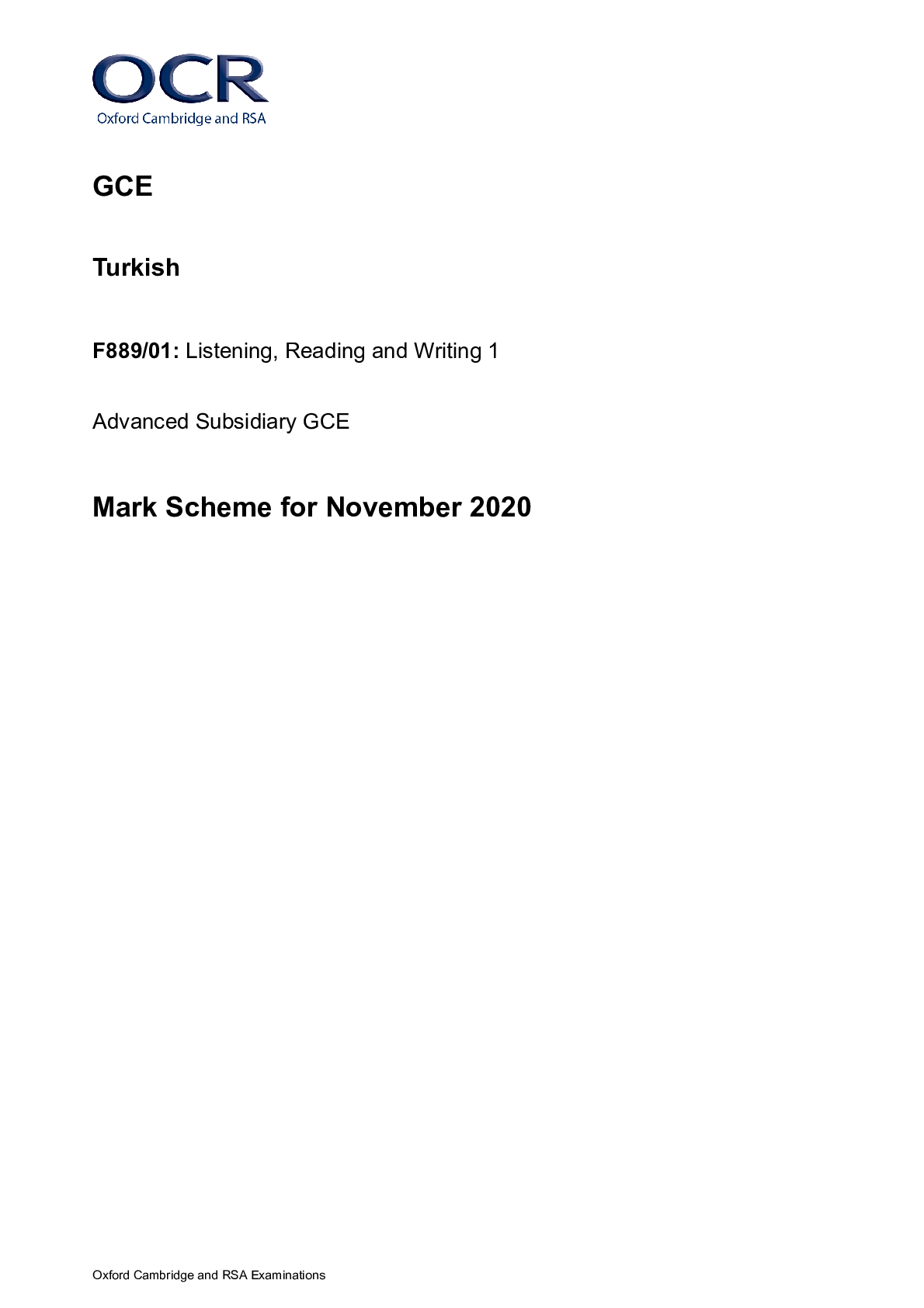
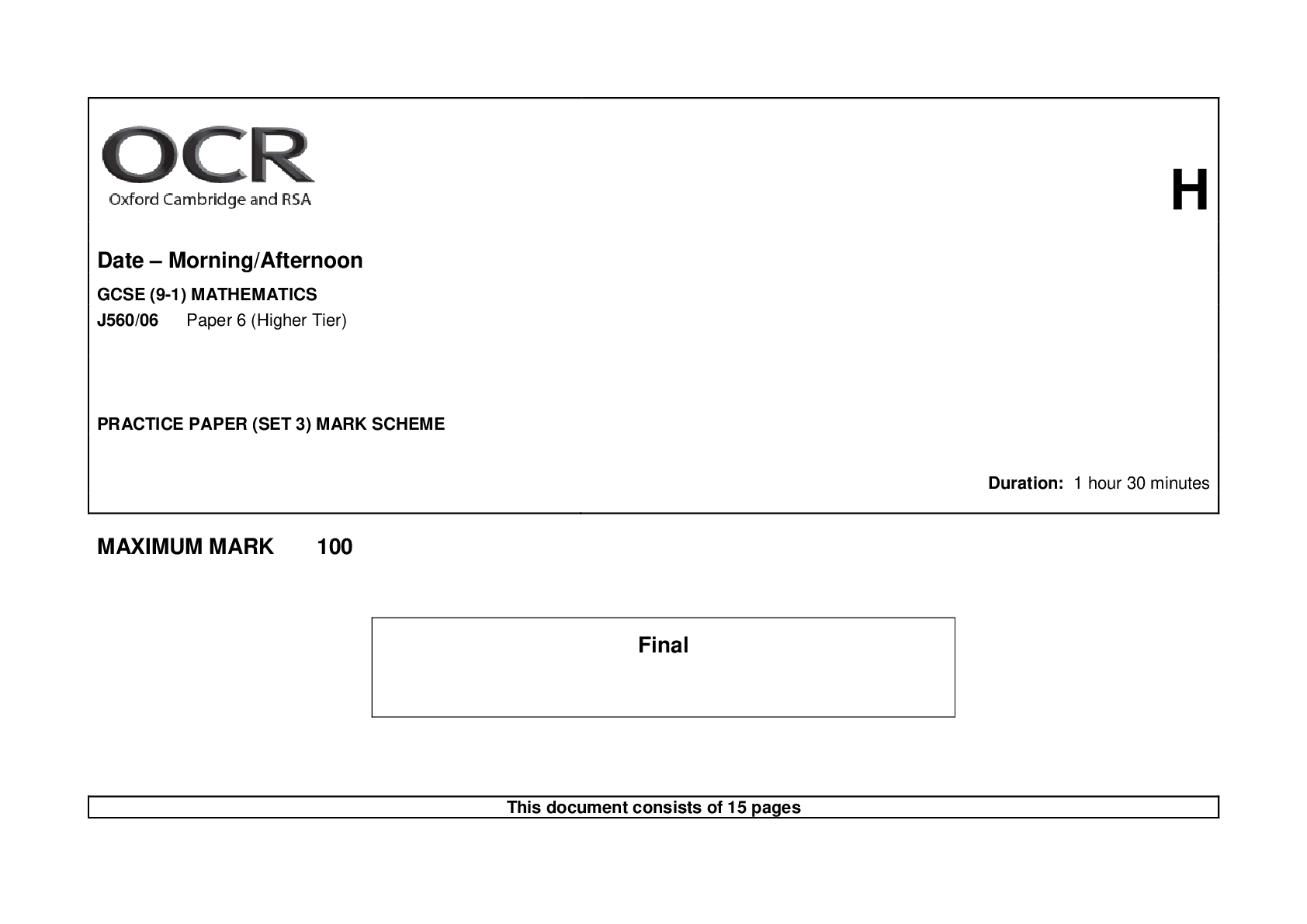


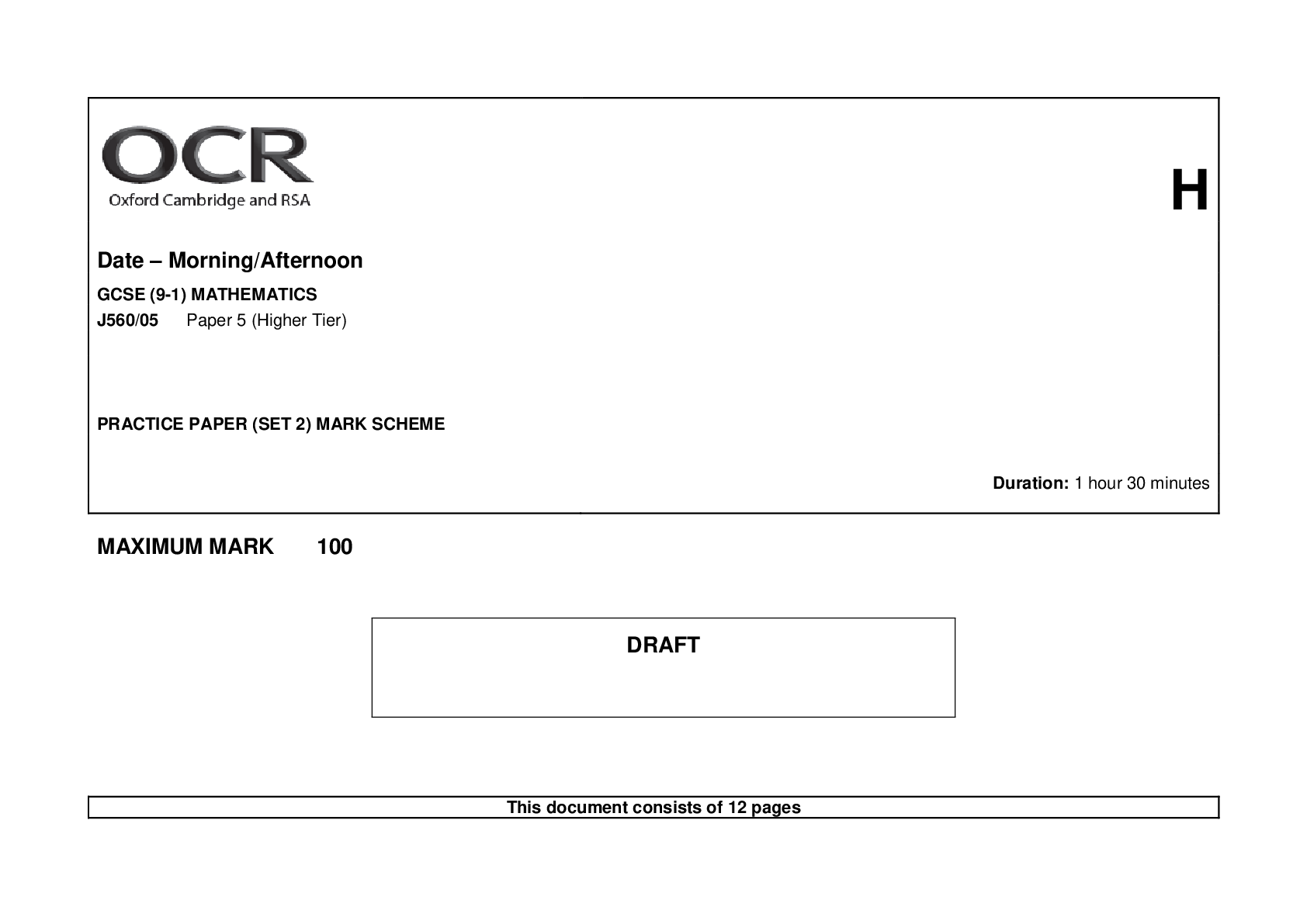
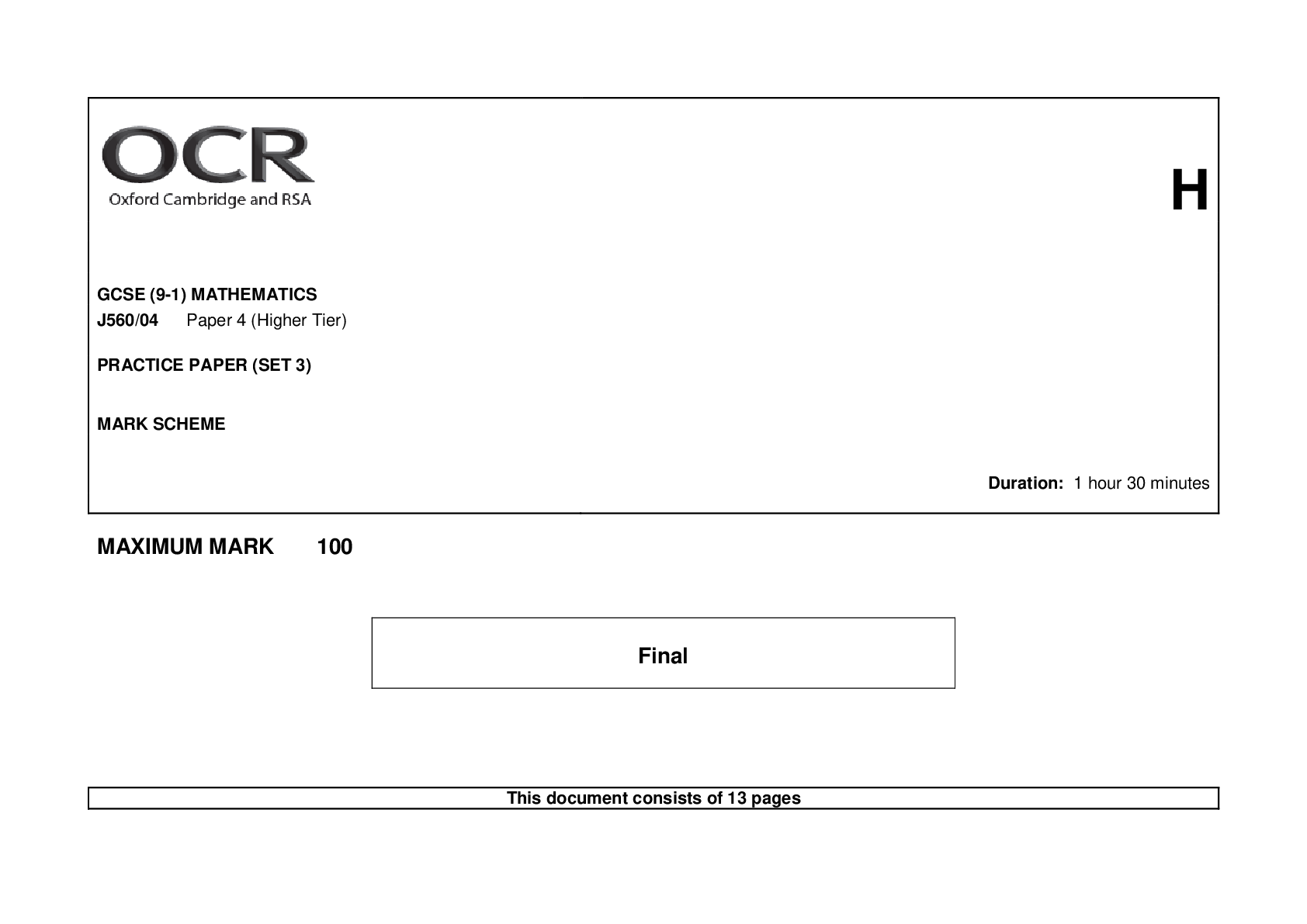
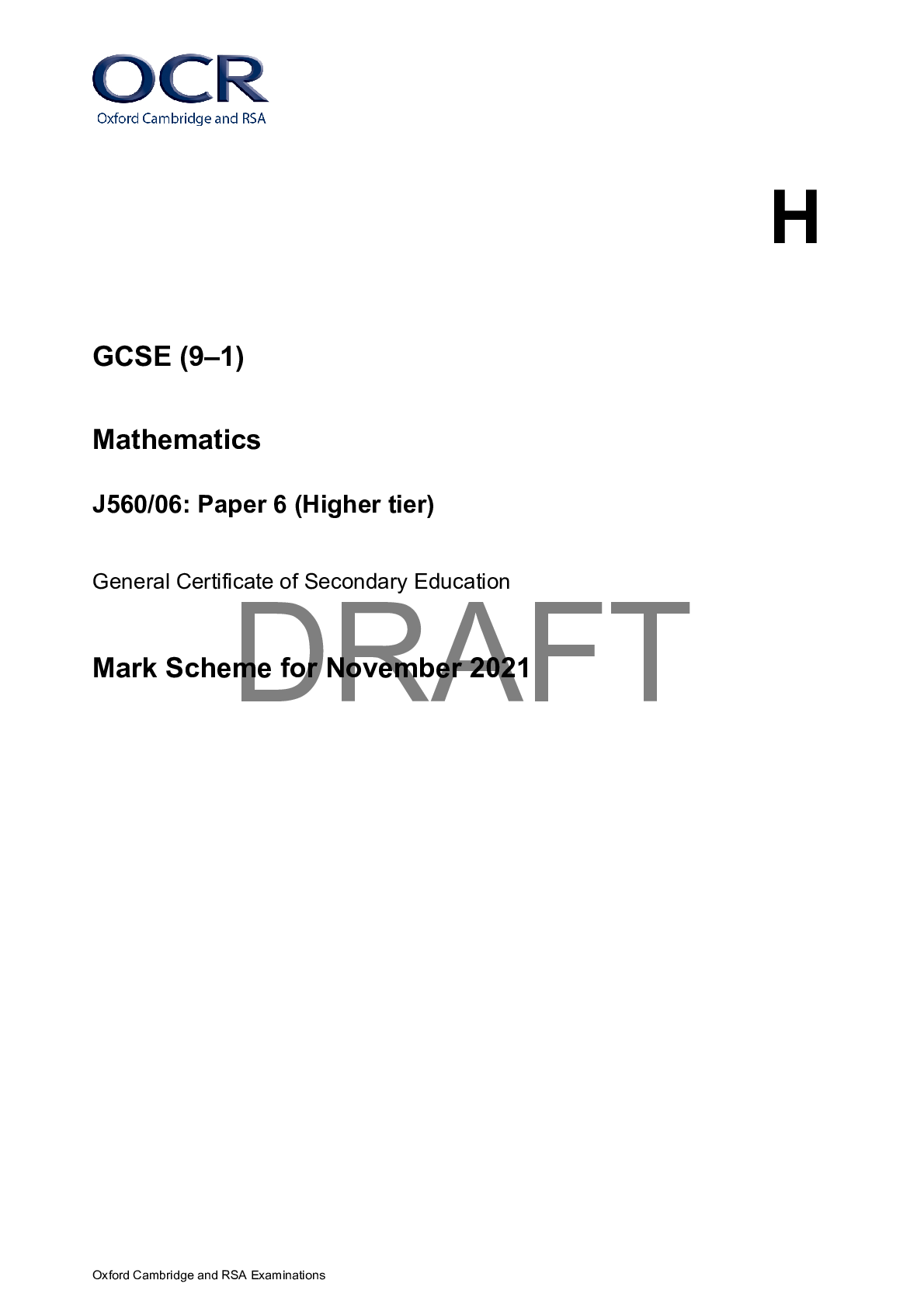

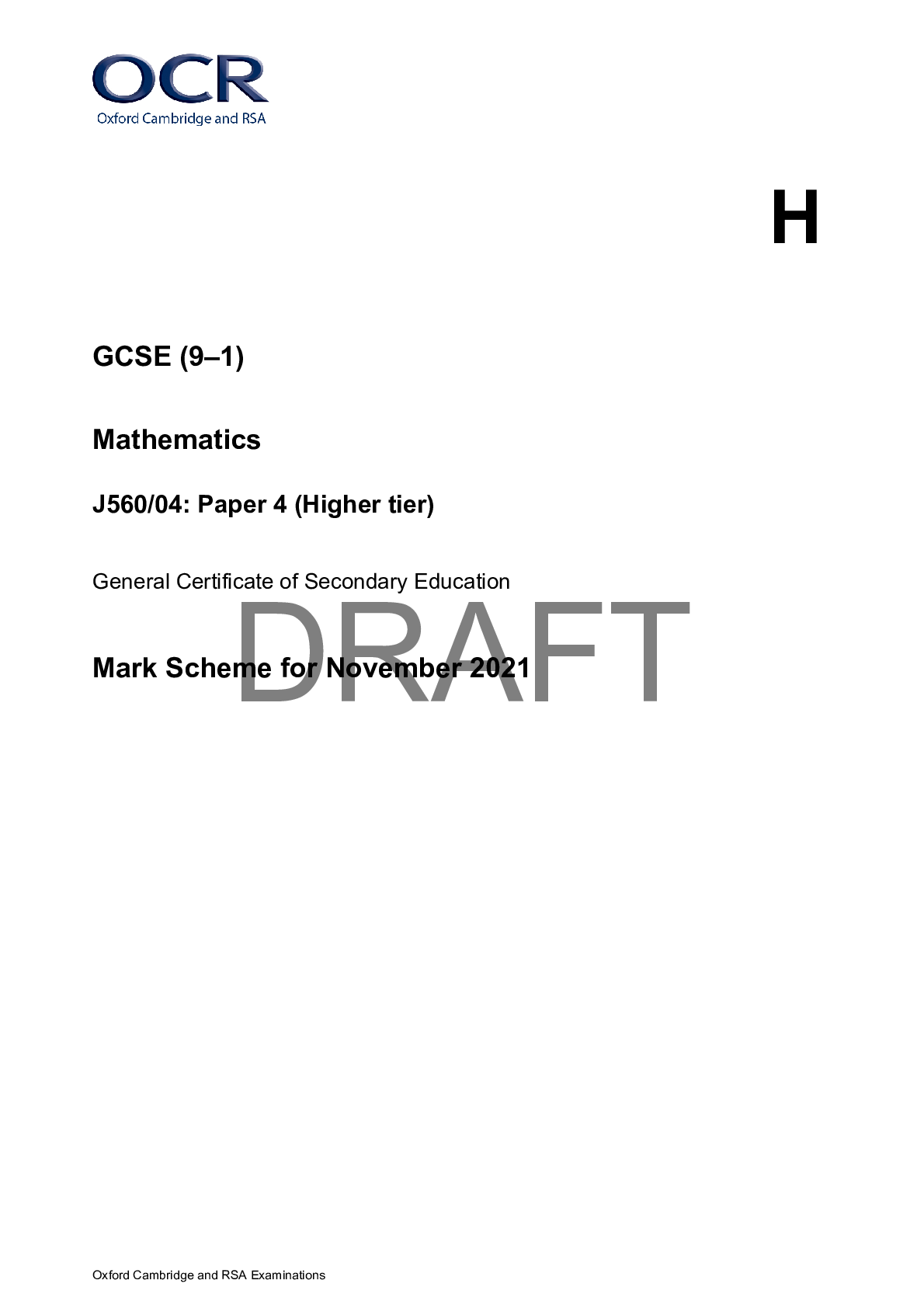
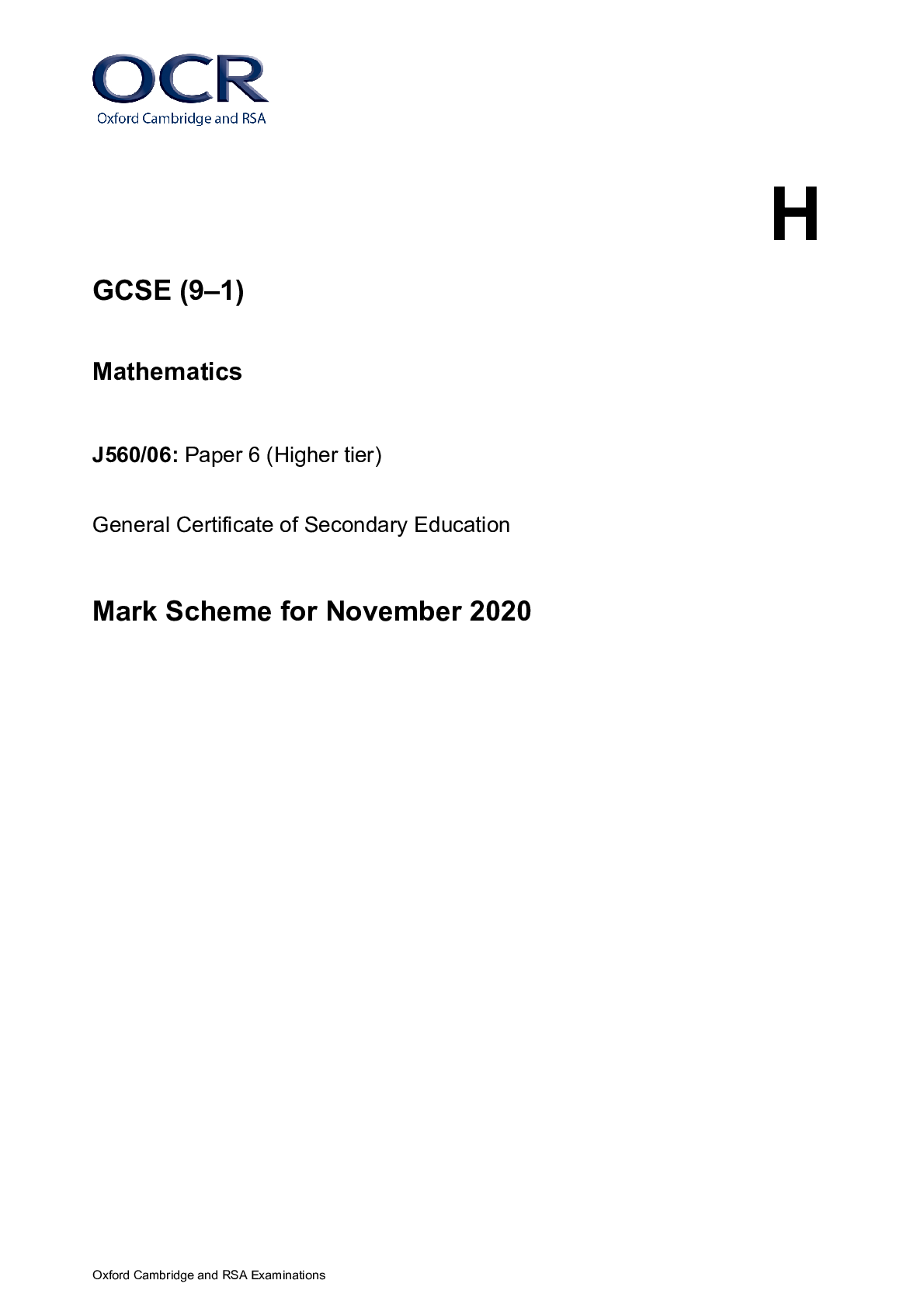
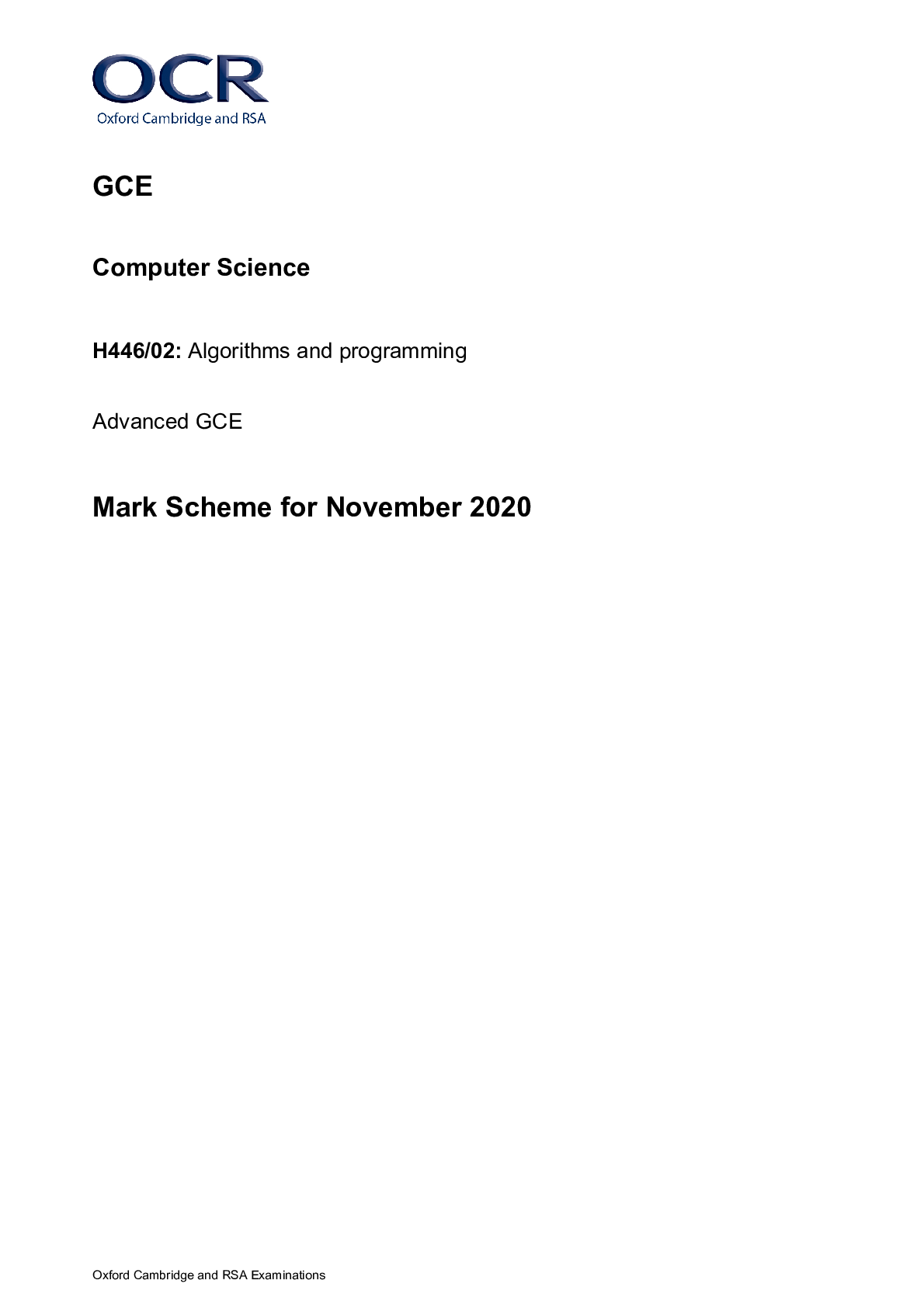
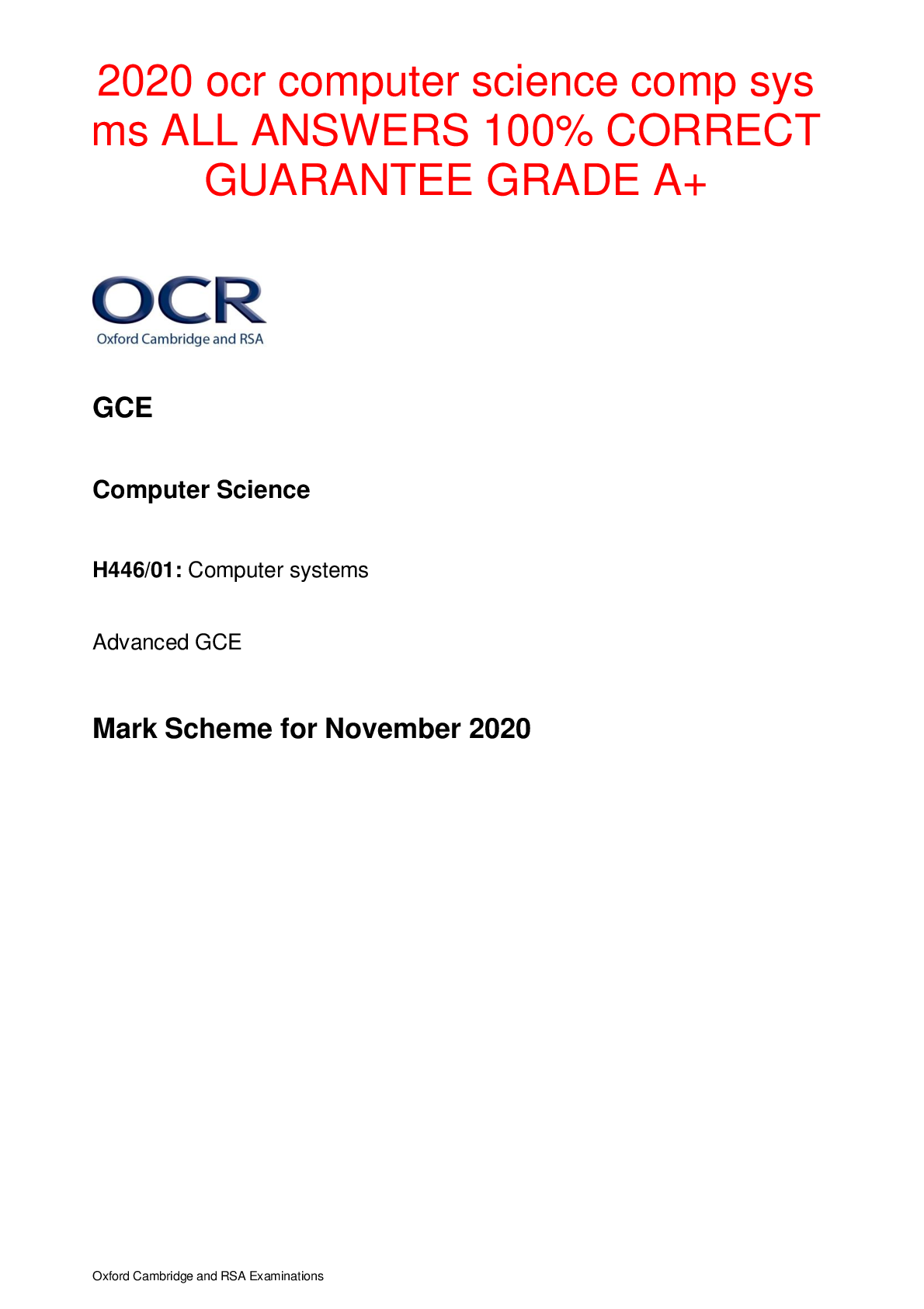

.png)
